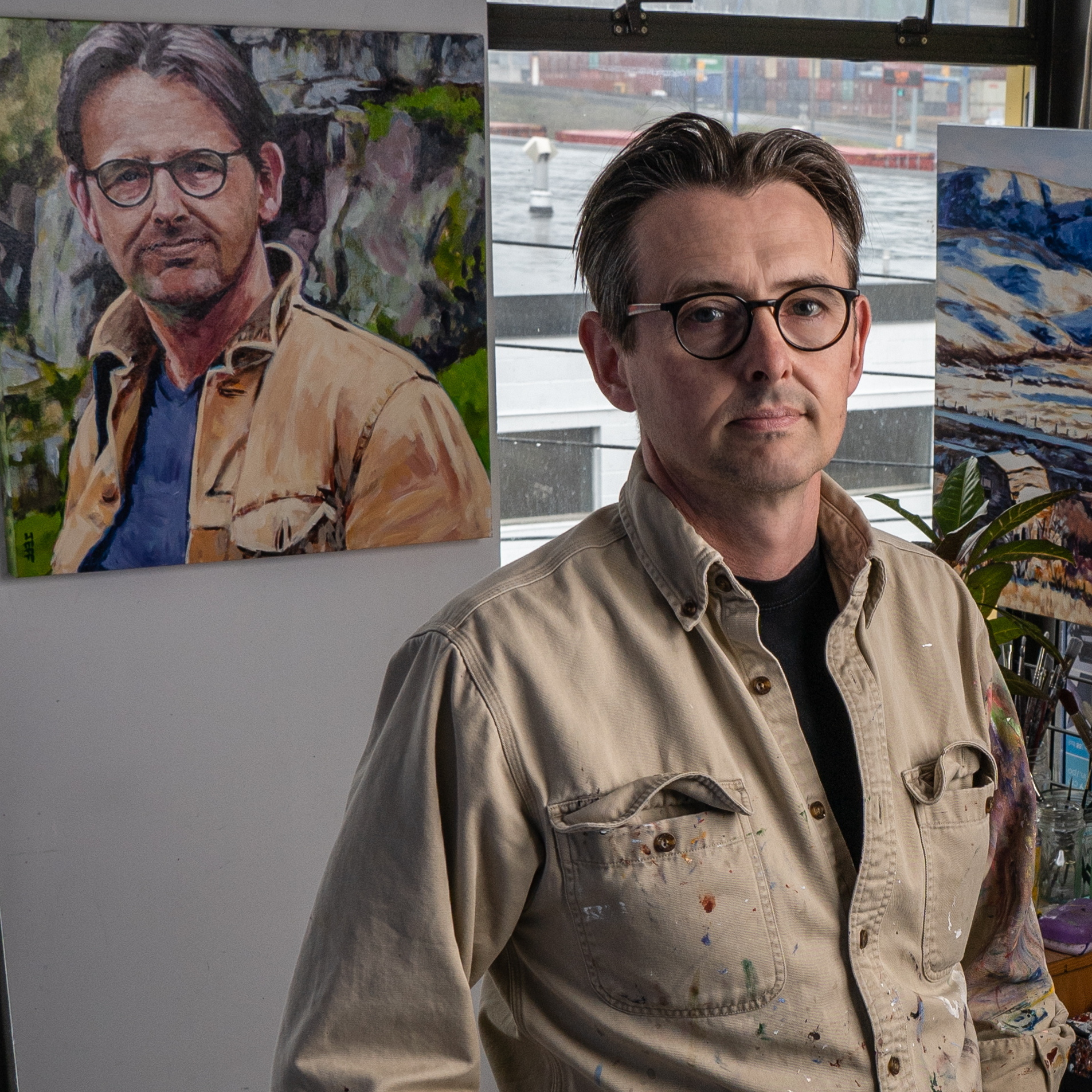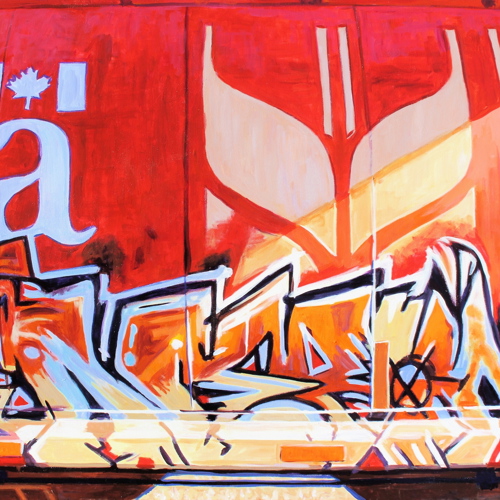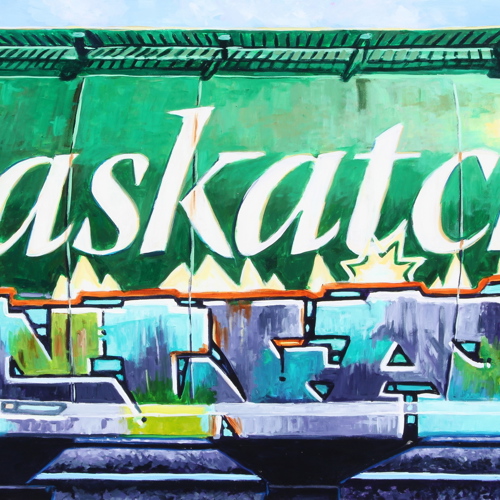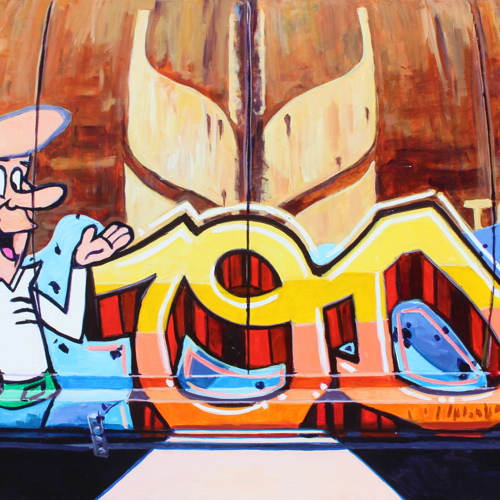
Hello and welcome to my page, I am a Visual Artist
Jeff Wilson grew up in Edinburgh, Scotland & trained as a structural geologist. He worked in mineral exploration around the world, settling in Vancouver in 2004, and took art classes at Emily Carr University, kick-starting a hobby that transitioned to a full-time art practice in 2013. Jeff’s painting collections have exhibited widely in public galleries in BC, Alberta and WA State. Highlights include the Art Gallery of St. Albert, Port Moody Arts Centre, The Langham, Okotoks Art Gallery, Smithers Art Gallery, Gibsons Public Art Gallery, ACT Gallery, Bellingham City Hall and the University of Washington Law School. Jeff has received a number of awards, including Finalist in the inaugural Saltspring National Art Prize, appeared in the recent “Landscape Artist of the Year Canada” TV show, and received two Downtown Eastside Small Arts Grants from the Vancouver Foundation. Jeff has completed residencies at the Booth in Shetland, Parks Canada’s Art in the Park and the Wallace Stegner House. His work is held in numerous private, public and corporate collections, including Alexco Resource Corp., BC Children's Hospital, Firehall Arts Centre, Le Dressay and Company, Lion’s Gate Foundation, MOI Solicitors, Salmon Arm Art Gallery, SimplexGrinnell, Smithers Art Gallery, Town of Okotoks, Union Gospel Mission, Vancity Credit Union, VGH Foundation and Victoria Gold Corp. Commercial representation includes Gray Sky Gallery (Seattle, WA), Hambleton Galleries (Kelowna, BC), Kimoto Gallery (Vancouver, BC) Kube Gallery (Fort Langley, BC) and Van Dop Gallery (New Westminster, BC) Jeff Wilson is based out of Portside Studios in Vancouver.

Contact Details
Wilson, Jeff
https://www.jeffwilsonart.org/
VANCOUVER, BC, Canada
Samples of my work
Artist Statement
This painting collection depicts that quintessentially Canadian icon, the graffiti-tagged hopper car, known & loved in towns large and small, across the country. The work presents a visually compelling combination of realism and form, and asks questions about the tension between the artist and the traditional idea of Canada Fright graffiti is the distant cousin to hobo codes that were written on the freight trains by the train-hopping hobos and rail workers in the 1900’s. They were usually written in coal on trains and under bridges where the hobos would congregate. The codes were considered an early form of graffiti. By contrast, The modern graffiti tradition originated on subway trains in New York in the 1970's. This spread to other cities, and made its way onto the side of freight trains in the late 80's, making their way across North America by the early 1990's In a Canadian context, covered hopper cars have a particular resonance. As in the US, they underpin Canadian grain handling & transportation, with the added significance that large part of the fleet was assembled and owned by the Canadian Government. The federal government started purchasing new cylindrical covered hopper cars in 1972 to address longstanding grain supply issues. A fleet of almost 13,500 covered hopper cars was assembled over the next 20 years, supplemented by 4,000 cars from the Canadian Wheat Board (CWB); 1,000 from the Government of Alberta; and 1,000 from the Government of Saskatchewan. By the mid-1980s these publicly-supplied hopper cars had become the principal asset employed in moving grain, gathering grain from a prairie rail network spanning over 17,000 route-miles in length. Over the years, they have become a ubiquitous sight in cities and towns of sizes across Canada, both present and absent; large and colourful, but at the same time, so common that they sometimes hide in plain sight. In many ways it is one of the most tangible symbols of the Federal Government in a sparsely populated devolved country like Canada, and of course, people are likely project their feelings onto that symbol and everything that it represents. Graffiti is an outlet for many people’s artistic skills. Graffiti on a grain car provides them an open canvas just waiting to be painted on. plastering your own masterpiece onto it, then imagining it rolling across the country can be a big deal. In a Canadian context, as well as being illegal, there is an added dimension that the defacing of a government railcar is a statement about Canada itself, whether a statement of identity, independence from, defiance to, or celebration of or Canada. This particular aspect has particular resonance in the light of recent rail blockades in support of indigenous rights across Canada Whatever your view, they have an undeniable part of the fabric of the Canadian landscape; and an reflecting Canada’s agricultural heritage, seen in city & country, by rich & poor alike.



